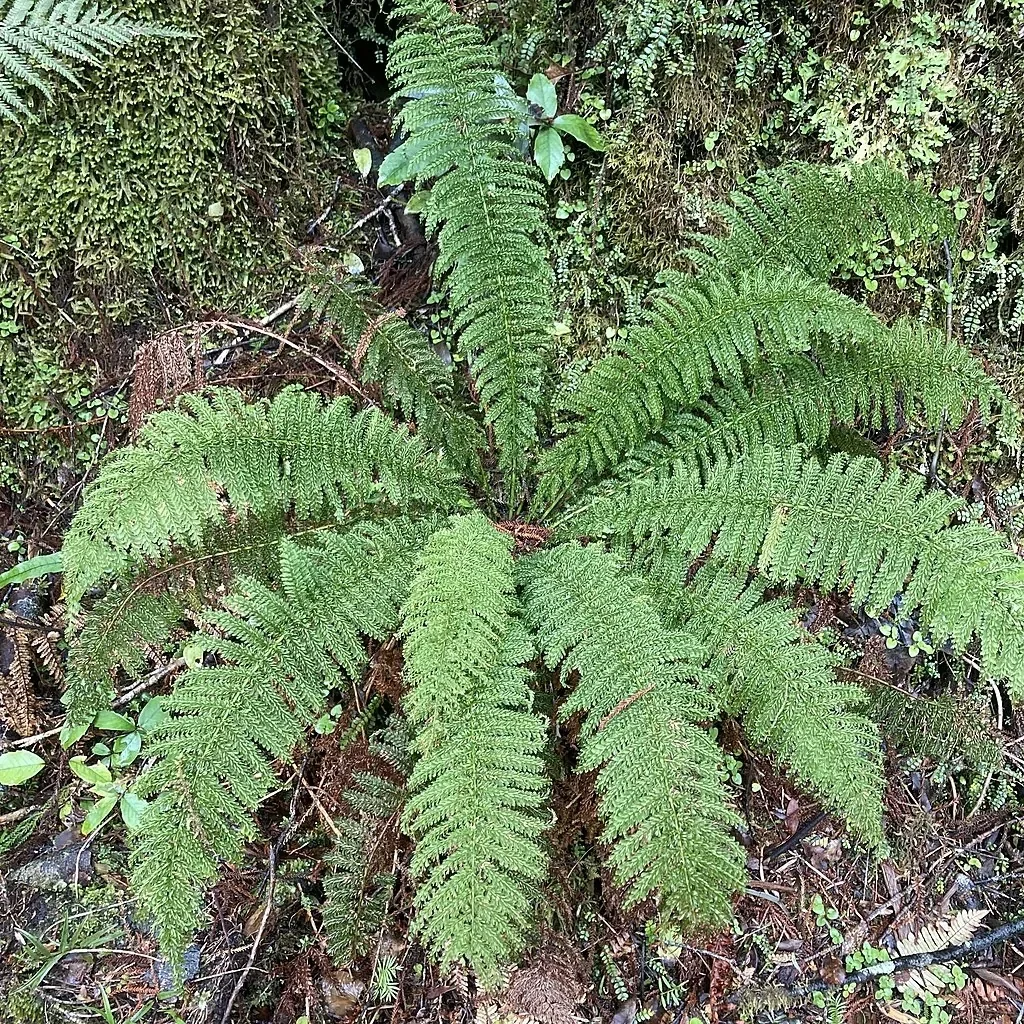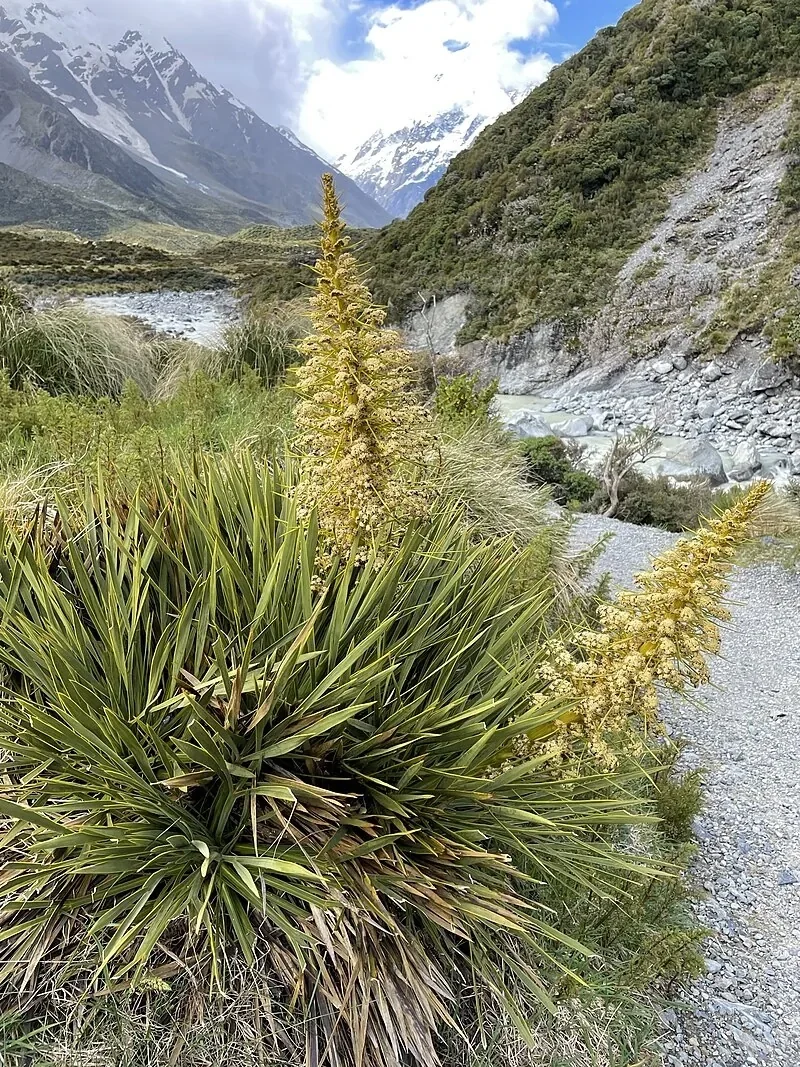
Prince
Leptopteris superba
Introduction
Introduction Overview
The Prince of Wales fern ( Leptopteris ) is a striking New Zealand fern . Learn more about New Zealand ferns .

Plant Description
Botanical Features
Prince ( Leptopteris superba ) is a distinctive native plant with unique botanical characteristics that make it well-suited to New Zealand's diverse environments. This species exhibits typical features of its genus and family, with specialized adaptations that allow it to thrive in its natural habitat. The plant 's morphological features, including its leaf structure, growth habit, and reproductive characteristics, reflect millions of years of evolution in New Zealand's isolated environment. Understanding the botanical description of Prince helps gardeners appreciate its unique characteristics and provides insight into its cultivation requirements and ecological role.
Quick Facts
| Scientific Name | Leptopteris Superba |
|---|---|
| Height | 1-2 meters (3-6.5 ft) |
| Spread | 1-2 meters (3-6.5 ft); forms large clumps |
| Water Needs | High; requires consistently moist, humus-rich soil |
| Light | Deep shade to filtered light; avoid direct sun |
| Frost Tolerance | Moderate; tolerates light frosts when established |
| Salt Tolerance | Low; not suited to coastal exposure |
| Growth Rate | Moderate; faster in cool, damp conditions |
| Lifespan | Perennial; long-lived in suitable forest settings |
Feather Fern naturally occurs in cool, damp, shaded environments in New Zealand's native forests. It thrives in areas with high rainfall, consistent humidity, and protection from direct sunlight and wind. It is most common in montane and subalpine forests.
Regional Suitability
| City | Suitability |
|---|---|
| Whangārei | Ideal |
| Auckland | Ideal |
| Hamilton | Ideal |
| Tauranga | Ideal |
| Rotorua | Ideal |
| Gisborne | Ideal |
| New Plymouth | Ideal |
| Napier | Ideal |
| Whanganui | Ideal |
| Palmerston North | Ideal |
| Wellington | Ideal |
| Nelson | Ideal |
| Christchurch | Ideal |
| Dunedin | Ideal |
| Invercargill | Ideal |
Natural Habitat
Natural Habitat Overview
Leptopteris is naturally found in specific habitats throughout New Zealand. Understanding its natural environment helps in providing appropriate growing conditions in cultivation.
Plant Conservation
Leptopteris superba , also known as Prince of Wales feathers or common crape fern, is endemic to New Zealand. Its current conservation status is classified as "Not Threatened" according to the New Zealand Threat Classification System (NZTCS) as of 2023. This classification is consistent with previous assessments from 2012. Regionally, it is also considered "Regionally Not Threatened" in Otago as of 2024.
Soil Requirements
Feather Fern performs best in the following soil conditions:
- Rich, humus-filled soil with high organic content
- Consistently moist but not waterlogged
- Well-draining yet moisture-retentive
- Slightly acidic pH (5.5-6.5)
- Similar to natural forest floor conditions
Light Requirements
This fern requires specific light conditions to thrive:
- Deep shade to filtered light
- Protection from direct sunlight, which can scorch fronds
- Ideal locations include south-facing aspects or under dense tree canopy
- Morning light with afternoon shade can work in cooler regions
- Consistent dappled light mimics its natural forest habitat
Water Requirements
Consistent moisture is critical for this fern:
- Keep soil consistently moist but not waterlogged
- Regular watering , especially during dry periods
- Benefits from high atmospheric humidity
- Misting fronds regularly helps maintain humidity
- Mulching helps retain soil moisture
Temperature Tolerance
Feather Fern prefers cool conditions:
- Thrives in cool, temperate climates
- Optimal temperature range: 10-20°C (50-68°F)
- Can tolerate light frosts when established
- Struggles in hot, dry conditions
- Protection from hot, drying winds is essential
Planting Guide
Planting Guide Overview
Prince of Wales Fern ( Leptopteris superba ) thrives in moist, shaded environments with rich, well-draining soil. Plant with the crown just above soil level and water regularly, especially during dry spells. Mulch to retain moisture and protect roots. Avoid direct sunlight, which can scorch the fronds.
Ecological Role
Wildlife Interactions
Leptopteris plays an important ecological role in New Zealand's native ecosystems. It provides habitat and food for native wildlife and contributes to ecosystem health and biodiversity.
Ornamental Value
- Highly prized as a feature fern in shaded gardens and native plant collections due to its delicate, feathery fronds and striking appearance.
- Ideal for woodland gardens, ferneries, and as an understorey plant in moist, sheltered locations.
- Provides habitat and shelter for native invertebrates and contributes to the biodiversity of New Zealand-s forest ecosystems.
- Helps maintain soil moisture and structure in forest understorey environments.
- Admired for its beauty and sometimes used in floral arrangements, though it is best appreciated in its natural habitat or cultivated garden settings.
- Represents the unique diversity of New Zealand-s native fern flora.
Landscaping Uses
Landscaping Uses Overview
Leptopteris is highly valued in landscaping for its aesthetic appeal and practical benefits. It can be used in various garden styles and landscape applications.
Seasonal Care
Spring
Monitor for new frond growth and keep soil consistently moist. Remove any old or damaged fronds.
Summer
Provide shade and regular watering during hot, dry periods. Mulch to retain soil moisture.
Autumn
Reduce watering as temperatures drop. Remove spent fronds and tidy the plant.
Winter
Protect from frost and cold winds. Minimal watering is needed, but do not let the soil dry out completely.
Pruning
Pruning Techniques
Leptopteris (Creeping Shield Fern) generally requires minimal pruning. Remove dead or damaged fronds at the base to encourage healthy new growth. Pruning is best done in late winter or early spring. Avoid cutting healthy fronds, as this can reduce the plant-s vigor. Regularly clearing debris helps prevent disease and maintains a tidy appearance.
How to Grow Prince
The Prince of Wales Feathers fern is a truly magnificent native New Zealand fern, celebrated for its finely divided, translucent fronds that create a lush, feathery display. It is a highly specialized fern, thriving in cool, damp, shaded environments with consistently high humidity, making it an excellent choice for ferneries, shaded woodland gardens, or specialized microclimates. While it is a demanding plant, its unique beauty and ecological importance make it a rewarding species to cultivate. Understanding its propagation methods is key to successfully growing this unique fern.
From Spores
Propagating Prince of Wales Feathers from spores is the primary method for reproduction in nature, but it requires patience and very specific conditions. Collect mature spores from the undersides of healthy fronds when they are dark brown and easily dislodge. Sow the spores on a sterile, moist substrate (e.g., peat and sand mix) in a sealed container. Maintain consistently high humidity (near 100%) and a stable temperature (around 15-20°C) in a shaded location with indirect light. Germination can take several months, forming a green film (prothalli). Once prothalli develop, transfer to a larger container and allow sporophytes to grow. Transplant young ferns once they are large enough to handle. This method is ideal for large-scale propagation or for creating a naturalistic fernery.
From Division
Division of established clumps is also possible, though less common than spore propagation for this species. This is best done in spring when new growth is emerging. Carefully dig up a mature clump and gently separate it into smaller sections, ensuring each section has a healthy portion of roots and some fronds. Replant the divisions immediately into well-prepared soil that is moist, well-drained, and humus-rich. Water thoroughly after planting and keep consistently moist until new growth appears. This method is excellent for quickly expanding your stock of plants and for rejuvenating older, less vigorous clumps.
Pests and Diseases
Common Pests
Leptopteris is generally resistant to most pests due to its native adaptations. However, it may occasionally be affected by common garden pests such as aphids or scale insects.
Disease Prevention
To prevent diseases, ensure good air circulation around Leptopteris and avoid overwatering. Remove any diseased plant material promptly to prevent spread.
Cultural Significance
Traditional Uses and Values
Leptopteris superba , commonly known as Prince of Wales feathers or common crape fern, holds cultural significance for Māori, primarily through its association with traditional hair combs. The fern is known by several Māori names, including Heruheru, huruhuru o nga waewae o Paoa, maikuku moa, ngutu kākāriki, ngutungutu, ngutungutu kiwi, Pūniu, Pūnui, tētē, and tētē kura.
The name "Heruheru" itself is significant, as "Heru" in Te Reo Māori means "comb". Historically, Māori utilized the hard stipes (stalks) of the fronds from Leptopteris hymenophylloides, a closely related species also referred to as heruheru, to fashion teeth for these hair combs. While Leptopteris superba is a relative, this specific use is attributed to the broader "heruheru" group of ferns.
Despite the general importance of ferns in Māori culture for food, medicine, construction, and weaving, there are no recorded traditional uses of Leptopteris superba (or L. hymenophylloides) for rongoā (medicine) or as a food source. However, the presence of numerous Māori names for the fern underscores its recognition and integration into Māori cultural knowledge and language.
Bonus Tip
The Carpet Fern
The Prince of Wales Feathers fern has a truly unique frond structure that gives it its distinctive appearance. The ultimate segments of its fronds are bent upwards at a 90-degree angle to the plane of the frond, creating a texture that resembles the pile of a carpet. This unusual adaptation contributes to its lush, fluffy appearance and is a key identifying feature of this magnificent fern.







